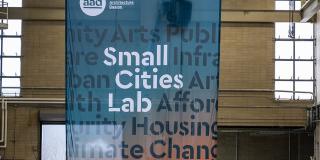In a new paper, Arman Grigoryan, international relations faculty at Lehigh University, ascribes post-Soviet Armenia’s failure to transition to democracy, despite early promise, to the conflict with Azerbaijan over Nagorno-Karabagh and the political processes it set in motion .
As the world awaits the next steps after Armenia’s recent pro-democracy revolution—which toppled its authoritarian leader Serzh Sarksyan leading to an upcoming parliamentary election May 1st—it seems an opportune time to ask: why did Armenia fail in its transition to democracy after achieving independence from the Soviet Union in the early 1990s?
In a paper published online in Nationalities Papers earlier this month, Arman Grigoryan, assistant professor of international relations at Lehigh University, argues that the main driver of Armenia’s failed transition after independence was its war with Azerbaijan and the continued state of belligerence after the ceasefire was signed in 1994.
He writes: “Despite its early promise, Armenia’s transition to democracy has stalled. The literature on post-Communist transitions ascribes this outcome to the autocratic preferences of its first generation of leaders, and particularly the country’s first president Levon TerPetrossian.”
However, he says in the article—called “The Karabakh conflict and Armenia’s failed transition”—the dominant narrative “…depicts a profoundly distorted picture of the Armenian politics of the 1990s. The failure of Armenia’s transition was primarily due to the conflict in Nagorno-Karabakh and the political processes it set in motion.”
The Karabakh conflict and Armenia’s failed transition
“In the first half of the nineties, Armenia was often referred to in the Western media as an ‘island of democracy,’” says Grigoryan “It had a government that had been elected in free and fair elections and had embarked on a fertile period of legislative reforms.”
In the years immediately preceding Armenia’s independence from the Soviet Union in 1991, a conflict had erupted between Armenia and its neighbor, Azerbaijan, over a region known as Nagorno-Karabagh, which was recognized as part of Azerbaijan, but was inhabited by Armenians. By 1992, the conflict had escalated into a full-blown war.
According to Grigoryan, the Western scholarship regarding Armenia’s failure to become a democracy completely misses the forces at work in the early days of the country’s independence.
He writes: “One would never guess reading that literature that authoritarian nationalism and liberalism were, in fact, pitted against each other in a sophisticated debate and intense political contestation, and that it was the liberals who won initially.”
In his paper’s conclusion, he writes: “For decades, Armenians had been told by their nationalist intelligentsia and Communist apparatchiks that the nation was surrounded by enemies who were looking for an opportunity to finish what was left unfinished in 1915, and that the Soviet army was the only thing standing in their path.”
“Despite its early promise, Armenia’s transition to democracy has stalled. The literature on post-Communist transitions ascribes this outcome to the autocratic preferences of its first generation of leaders, and particularly the country’s first president Levon TerPetrossian.”
Grigoryan continues: “A generation of intellectuals who came of age in the 1970s and 1980s first timidly, then openly challenged these assumptions and the entire nationalist narrative that they rested Nationalities Papers 13 upon. They saw the decaying, corrupt, assimilationist Soviet Union as a more urgent threat to Armenians’ future and set out to create an alternative set of aspirations, which included independence, peace with neighbors, and development as a normal, democratic country. This message was received with overwhelming support by the public. The Karabagh conflict, however, undermined these aspirations and hopes, simultaneously relegitimizing elements of the traditional narrative and empowering an activist military establishment, which succeeded in unseating a liberal president. This was the path of Armenia’s transition failure.”
War and democracy
Grigoryan is exploring the broader topic of war and democratic transition for an upcoming book.
“There is no consensus in the literature on how war and democratic change are related,” he says.
During a talk he gave last year in Los Angeles as part of a conference called “End of Transition: Armenia 25 Years On, Now What?” hosted by the University of Southern California’s Dornsife Institute of Armenian, Grigoryan referred to a popular international relations theory known as the democratic peace theory. The theory maintains that there is something special about democracies and their foreign policy—particularly the way they relate to other democracies. It posits that liberal democracies have carved out a zone of peace that can be credited to liberal governments and a commitment to liberal politics.
Grigoryan argues against this idea.
“The evidence actually suggests a reverse causal arrow where peace causes democracy rather than democracy causing peace,” he says. Countries that have been able to settle their differences one way or the other, he adds, have had an easier time becoming and remaining democratic. By contrast, he says that if you look at places where there continue to be raging conflicts or enduring rivalries—even if not active wars—there is “a serious democratic deficit there.”






